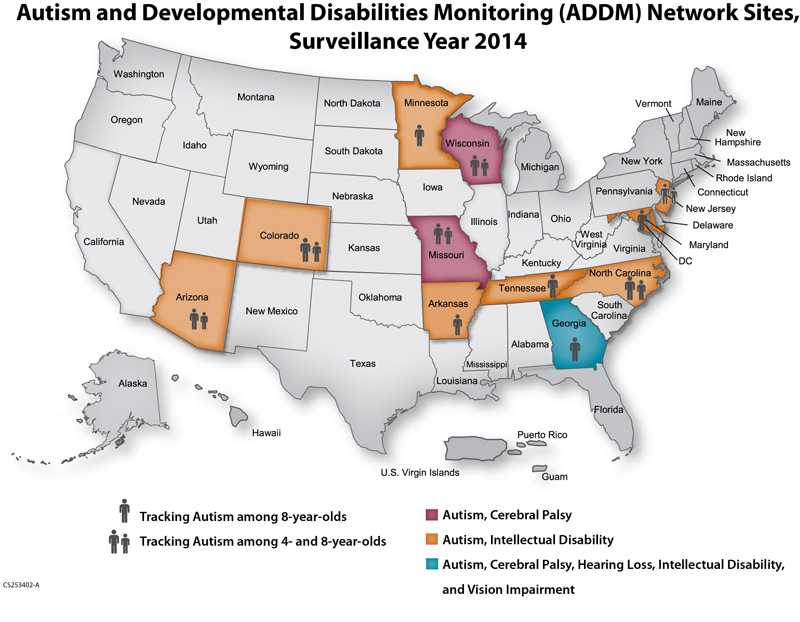New CDC funding will expand knowledge about children with autism spectrum disorder

CDC has launched a new phase of funding for the Autism and Developmental Disabilities Monitoring (ADDM) Network, the only collaborative network to monitor the number and characteristics of children with autism spectrum disorder (ASD) and other developmental disabilities in multiple communities throughout the United States. Over the next four years, CDC will invest over $20 million to enhance tracking at eight existing sites and to launch two new sites. All 10 sites will track ASD among school-aged children, and six sites will also track ASD among preschool-aged children. “Thanks to the infrastructure we’ve built over the past decade, we know so much more about the number and characteristics of children with autism. Continuing this important work will help us shed light on emerging issues, such as the impact of the new DSM-5 diagnostic criteria on prevalence and gaps in early identification of children with autism,” says Dr. Coleen Boyle, Director of the National Center on Birth Defects and Developmental Disabilities. In addition to tracking, sites will also conduct analyses of the data to better understand increases over time in the number of children identified with ASD, and carry out education and outreach activities in their local communities.
Awardees
- Colorado Department of Public Health and Environment
- Johns Hopkins University
- Rutgers, The State University of New Jersey
- The University of Wisconsin-Madison
- University of Arizona
- University of Arkansas for Medical Sciences
- *University of Minnesota
- University of North Carolina at Chapel Hill
- *Vanderbilt University
- Washington University in St. Louis
*New Sites
Together, these sites will contribute to improved understanding of ASD and other developmental disabilities; improve understanding of the implications of the change in ASD diagnostic criteria; build stronger relationships with community partners; increase dissemination of ADDM Network data; and improve reliability and efficiency of CDC’s ASD tracking system. Ultimately, these intended outcomes translate into improvements for children and their families. “We believe that the ADDM Network data can be used in communities across the country to help children with autism and other developmental disabilities live to the fullest,” adds Dr. Coleen Boyle.

**The site in Georgia is administered by CDC.
More Information
- To learn more about the Autism and Developmental Disabilities Monitoring (ADDM) Network, please visit www.cdc.gov/ADDM.
- To access the most recent data from the Autism and Developmental Disabilities Monitoring (ADDM) Network, please download the scientific report or the 2014 Community Report .
- To learn more about autism spectrum disorder, please visit www.cdc.gov/Autism.
E-mail Your Friends
"Children with autism spectrum disorder are not being diagnosed as early as they could be. Learn the signs of autism and get help if you’re concerned."
Share on Facebook

“Many children with autism spectrum disorder (ASD) are not being identified as early as they could be. Early identification is the most powerful tool we have right now to make a difference in the lives of children with ASD.”
Share on Twitter
“Too many children w/ autism are not being identified as early as they could be. Earlier is better. #ActEarly”
- Page last reviewed: April 28, 2017
- Page last updated: January 2, 2015
- Content source:


 ShareCompartir
ShareCompartir